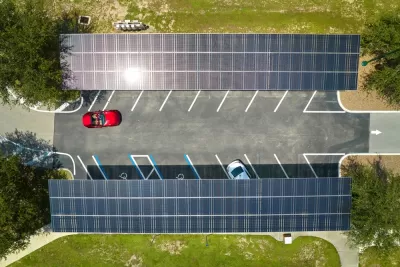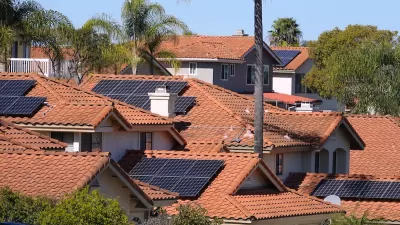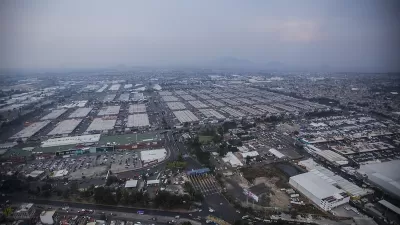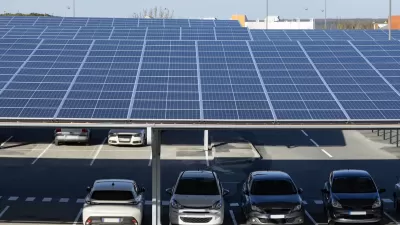Placing solar panels over parking lots has multiple benefits, but higher costs have prevented their widespread adoption in U.S. cities.

“We need to rapidly transition away from fossil fuels to avoid the worst effects of global warming. And, as extreme weather becomes more common, shade and shelter from downpours would be a welcome development for drivers,” writes Andrew Block for CNET. So why isn’t every outdoor parking space covered by solar panels?
Parking lot solar is becoming more common in some parts of the United States like the Southwest, but there are some challenges in retrofitting existing parking lots with solar canopies. According to Tim Powers of Inovateus Solar, “A carport is roughly 40% more expensive compared to a ground mount system.” But carports provide an extra service and can help institutions and businesses with large parking lots lower their carbon footprint. At Michigan State University, 5 percent of campus energy consumption is powered by parking lot solar panels. And it made use of existing development, preserving existing farmland. “Michigan State's installation kept 45 acres of agricultural land in production, a fact Michigan State called out in promoting one of the several awards it won for the array.”
Carport solar could also power electric vehicles, industry experts add. For example, “An average Walmart parking lot could support about 100 electric vehicle chargers if covered in solar panels, Pearce's research found.” Ultimately, while carport solar installations aren’t the most cost-effective way to install solar, they can be a useful solution where land is scarce. Last year, France passed a law requiring solar panels over most parking lots in the country by 2028.
FULL STORY: Why Isn't Every Parking Lot Covered With Solar Panels?

Planetizen Federal Action Tracker
A weekly monitor of how Trump’s orders and actions are impacting planners and planning in America.

Maui's Vacation Rental Debate Turns Ugly
Verbal attacks, misinformation campaigns and fistfights plague a high-stakes debate to convert thousands of vacation rentals into long-term housing.

Restaurant Patios Were a Pandemic Win — Why Were They so Hard to Keep?
Social distancing requirements and changes in travel patterns prompted cities to pilot new uses for street and sidewalk space. Then it got complicated.

In California Battle of Housing vs. Environment, Housing Just Won
A new state law significantly limits the power of CEQA, an environmental review law that served as a powerful tool for blocking new development.

Boulder Eliminates Parking Minimums Citywide
Officials estimate the cost of building a single underground parking space at up to $100,000.

Orange County, Florida Adopts Largest US “Sprawl Repair” Code
The ‘Orange Code’ seeks to rectify decades of sprawl-inducing, car-oriented development.
Urban Design for Planners 1: Software Tools
This six-course series explores essential urban design concepts using open source software and equips planners with the tools they need to participate fully in the urban design process.
Planning for Universal Design
Learn the tools for implementing Universal Design in planning regulations.
Heyer Gruel & Associates PA
JM Goldson LLC
Custer County Colorado
City of Camden Redevelopment Agency
City of Astoria
Transportation Research & Education Center (TREC) at Portland State University
Jefferson Parish Government
Camden Redevelopment Agency
City of Claremont





























